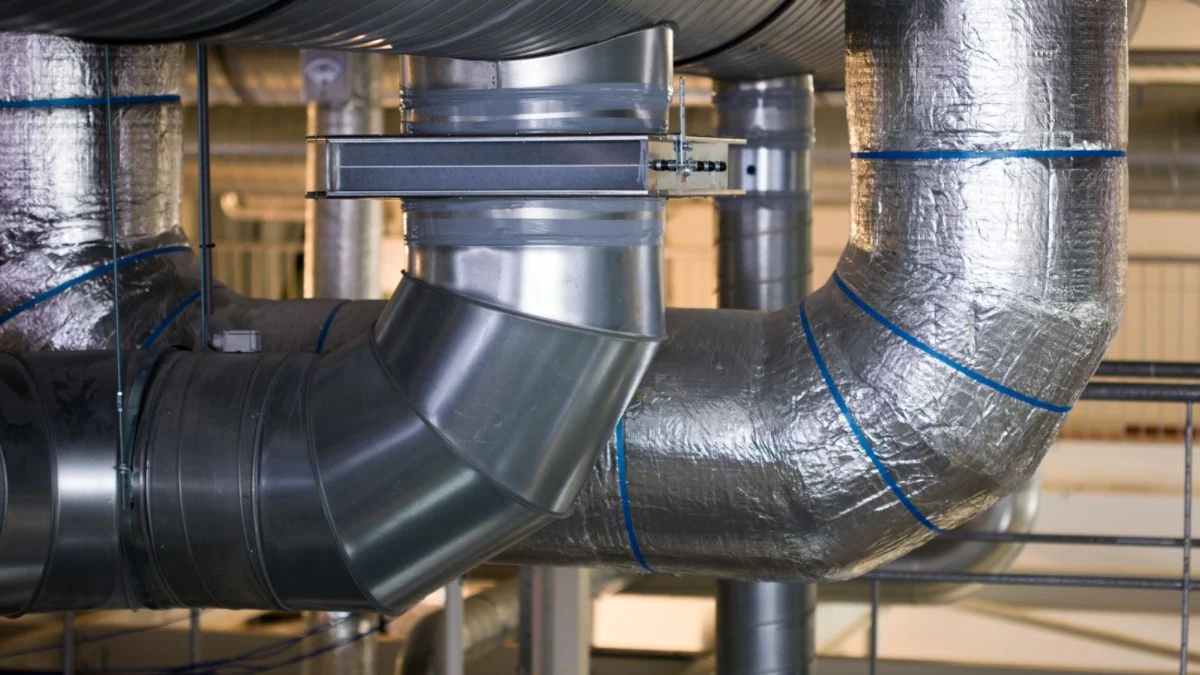
Home ducts are designed to distribute conditioned air throughout a house and return it back to the HVAC system, but must also be sealed to prevent leakage.
Dirty ducts may contain contaminants that could make you and your family sick, yet cleaning has never been proven to prevent health problems. If you need to learn more, Cinch Home Services answers your duct warranty questions here.
Table of Contents
Ductwork
Ductwork ensures air flows where it needs to go in your home, such as providing heated or cooled air directly to rooms that need climate control, while returning and dispersing it back through your HVAC system for further heating/cooling needs.
Rigid sheet metal ducts made of either aluminum or galvanized steel are the most prevalent choice in homes today, offering smooth interior surfaces to help minimize dust. Furthermore, they’re relatively durable and puncture-proof while remaining easy to use despite tight spaces. However, working with rigid sheet metal can sometimes prove challenging due to tight space constraints.
Take-offs reduce air turbulence by connecting to branch ducts; turning vanes direct airflow; volume control dampers and rubberized vibration isolators are used to decrease noise; volume control dampers and rubberized vibration isolators can further help to mitigate noise pollution. If your air ducts are noisy or have visible holes or disconnected sections, consult an HVAC specialist; they’ll know how best to insulate and seal them for your family’s comfort.
Registers
Most residential HVAC systems consist of traditional ductwork that delivers heated or cooled air directly into rooms. Registers, commonly referred to as vent covers, cover openings in floors, walls or ceilings where ducts enter a room – these contain adjustable dampers to control their openings if desired.
Wall registers should be located low on interior walls in cold climates or higher up on them in warmer regions to draw ceiling air into them, improving airflow through your system and ultimately increasing comfort levels. In either situation, their placement helps improve flow.
Return ducts collect air from all areas of a building back to its furnace or air handler and are larger than supply ducts, often featuring metal grilles for ventilation. While tenants of some rooms may complain that heating or cooling their rooms is difficult, these issues could actually be caused by defective registers in certain rooms.
Thermostats
Your thermostat serves as the brains behind your air circulation system in your home, reading temperature readings from rooms it detects to instruct heating and cooling units on what they should do next. They can even be available through online shopping when you need them.
Mechanical thermostats employ internal metal strips that expand and contract as their temperature rises, activating an electric circuit and heating up the room. Once overheating occurs, however, mechanical thermostats turn off this circuit in order to restore room cooling again.
Most people don’t realize it, but their homes contain an intricate system of air circulation which may account for cold or hot spots resulting in certain rooms being unusable.
If your room is always too cold or too warm, this could be due to duct issues. Luckily, these issues can usually be remedied by consulting with an HVAC professional; they will pinpoint the cause and find a solution–this might involve moving thermostat settings or even replacing entire duct systems altogether.
Sealing
Experts agree that properly sealed ductwork makes homes more comfortable and energy efficient, making the experience of home ownership both comfortable and cost effective. One effective way of detecting leaky ducts is checking monthly energy bills – an increase indicates conditioned air escaping through cracks in ductwork and increasing usage costs.
As a short-term fix, duct tape can be found at any home improvement store; however, its lifespan is short-lived and should only be used temporarily. Mastic duct sealant provides long-term sealants and should be applied using a caulk gun.
Mastic can be difficult to use alone when there are leaks in hard-to-reach places like behind drywall or at joints between elbows and straight runs of ductwork. A better alternative would be Aeroseal, which uses a patented process to pressurize your system to identify any leaks before blowing liquid rubber sealant sealant into them.